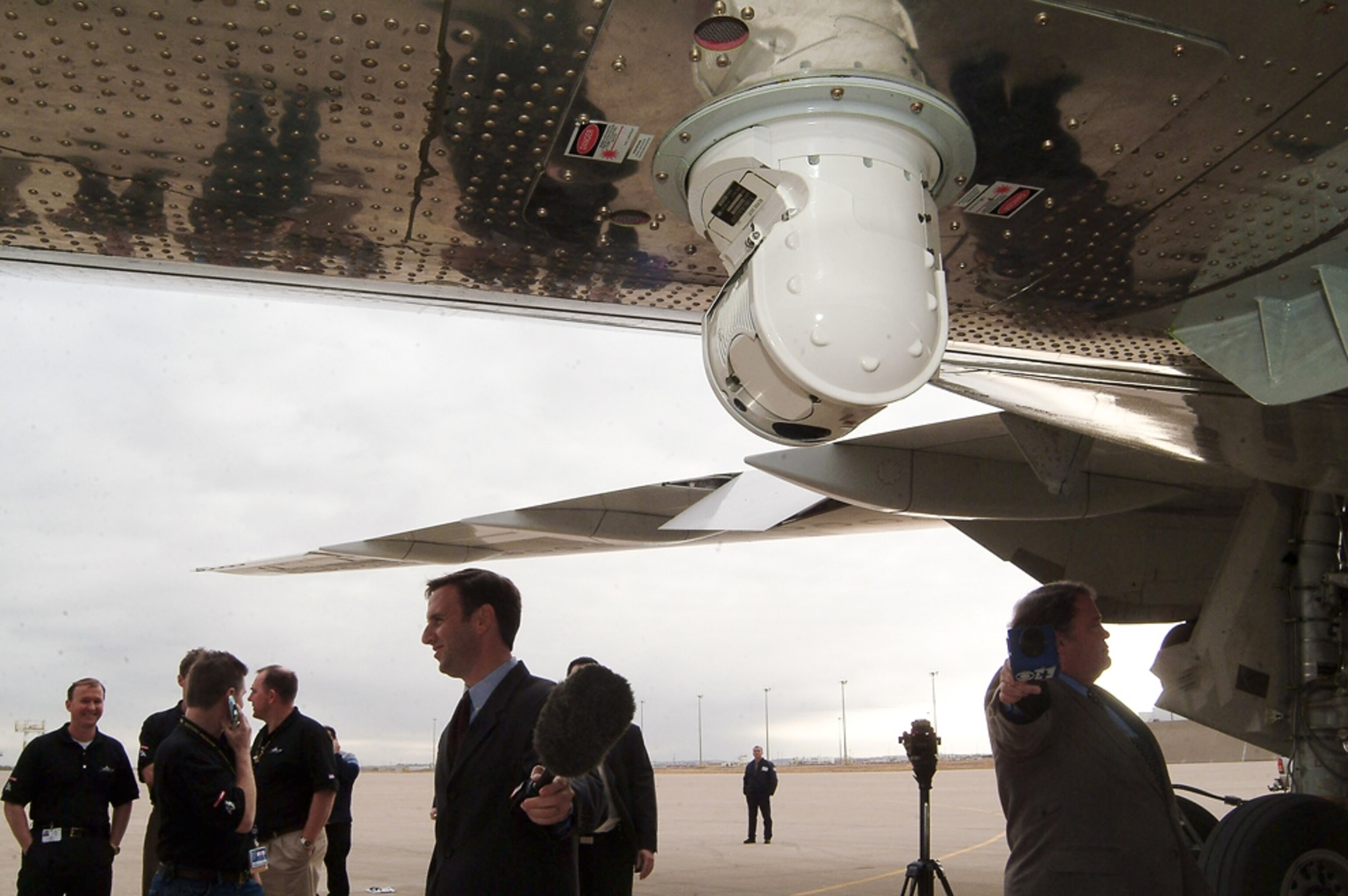
9/11: Six Tech Advances to Prevent Future Attacks
RC airliners, "dazzlers" among proposed tech to tackle air-based terrorism.
As the tenth anniversary of 9/11 approaches, imagine a replay of the attack: Another band of terrorists armed with box cutters manages to sneak onto an airliner and attempts to seize it for a suicide mission. (Read "The Original Plans for 9/11.")
As the terrorists rush into the cockpit, sensors send out an alarm to antiterrorism officials on the ground. They remotely disable the cockpit controls, engage an uninterruptible autopilot system, and land the plane in a secure location, where Navy SEALs rush on board and capture or kill the terrorists.
It's not as far-fetched as you might think.
(See a time line of the events of 9/11.)
Airliner remote control is just one of the many technologies on the horizon that could potentially thwart aviation-based attacks like the 9/11 disaster, according to government documents, journal articles, and antiterrorism experts.
Potential defenses range from advanced electronic surveillance systems that could intercept would-be terrorists before they get onto a plane to nonlethal weaponry and protective gear for flight crews, which would stymie an in-flight assault.
But experts say that simply being prepared to stop a 9/11-type attack is not enough, since future attacks will likely use different methods to maintain the element of surprise.
For that reason, experts are also searching for technology to defend aircraft against a much wider range of threats—including shoulder-fired missiles—and racing to develop attack-prevention software.
Unfortunately, it's probably only a matter of time before aviation defenses are tested again.
"Someone will attack airplanes again eventually," said Bruce Schneier, a security technologist and author. "They have for decades and will continue for decades."
1. Remote-Controlled Airliners
According to a U.S. patent document, aviation giant Boeing has actually developed remote-control technology for flying an airliner, which—at least in theory—could have prevented the attacks on the World Trade Center and Pentagon that killed nearly 3,000 people.
Boeing spokesperson Doug Alder said in an e-mail that the aircraft maker isn't currently planning to produce the device. But a European consortium that includes aircraft maker Airbus and electronics and engineering giant Siemens reportedly has been working for years on similar technology, according to Germany's Süddeutsche Zeitung newspaper.
(See pictures from the 9/11 memorial's official book.)
2. Bio-monitors: Preventing Another 9/11 at the Airport
The surest way to stop terrorists from hijacking or bombing planes from within may be to stop attackers from boarding in the first place.
Already, U.S. airports have been equipped with Explosives Trace Detection Devices, which can scrutinize passengers' hands and luggage for explosives residue, and controversial imaging scanners that allow security personnel to look under passengers' clothing for concealed weapons or explosives. (The software was recently upgraded to give screeners only an outline of a passenger's body.)
But researchers also have envisioned merging sophisticated video surveillance at airports with software that analyzes facial expressions for signs of lying, according to a commentary by Paul Ekman, a retired University of California, San Francisco, psychology professor and security consultant.
Other devices, which would remotely scan for irregular blood pressure and heart rates, could potentially augment such monitoring, Ekman says.
(See pictures: "9/11, Then and Now" [2006].)
3. Remote Video Monitoring
To counter attacks on board jetliners, experts have been working to develop other lines of defense.
European researchers, for example, are developing onboard surveillance systems, including sensors and video cameras in the cabin, as envisioned by the European Commission's Security of Aircraft in the Future European Environment project. The setup may also include sophisticated software that would analyze passengers' facial expressions and movements for suspicious behavior.
4. Light Guns to Dazzle Attackers
According to 2002 U.S. congressional testimony, U.S. government researchers are looking into the possibility of equipping air marshals with nonlethal "dazzlers"—weapons similar to the PHaSR (PDF), a laser rifle that can temporarily blind and disorient an attacker with a beam of pulsating light.
Such weapons might enable airmarshals, even if outnumbered, to confront and disable hijackers without endangering other passengers.
(Related pictures: "Eighteenth-Century Ship Found Under 9/11 Site.")
5. Superthin, Flexible Body Armor
Eventually, it also might be possible to outfit marshals and flight crews with uniforms that double as body armor.
University of Michigan chemical engineering researchers, for example, have developed a thin but superstrong fabric by bonding 300 alternating layers of clay and polymer.
Meanwhile, other scientists in the U.S., Europe, and China have combined ordinary cotton with superhard boron to create a boron nanotube fabric that is light and flexible enough to be worn as an undershirt yet may in future iterations be tough enough to block a bullet.
(See pictures of 9/11 artifacts, and get the personal stories behind them.)
6. Missile Disrupters
Some experts, however, warn against spending too much time and resources preparing for a repeat of the 9/11 attack.
It's unlikely future attacks will involve flying planes into buildings, they say, because the advantage of surprise has been lost.
Additionally, today airline crews and passengers most likely would fight back, according to John Pike, founder and director of the Washington, D.C.-based think tank GlobalSecurity.org and a former national security analyst for the Federation of American Scientists.
For example, passengers fought and subdued attempted "shoe bomber" Richard Reid when he tried to blow up an American Airlines flight in December 2001. Similarly, travelers overpowered Nigerian terrorist Umar Farouk Abdulmutallab before he could detonate a bomb concealed in his underwear on a Northwest Airlines flight in 2009.
"When was the last time somebody successfully staged one of these [in flight] attacks?" Pike said. "It was on September 11.
"Chances are, you're not going to see terrorists keep trying something unless they think they have a reasonable chance of success."
Pike is similarly dismissive of potential bombers' weapons. "Their bomb-maker in Yemen only knows how to make three types of devices, and none of them works very well."
Instead, Pike is far more worried about terrorists on the outskirts of airports shooting airliners with shoulder-fired missiles, or MANPADs.
Terrorists potentially have access to thousands of such weapons, which are unsecured and available for sale in countries such as Ukraine and Nigeria, he said. And MANPADs may be even easier to come by now, in the wake of unrest in Libya, according to the New York Times.
A 2005 RAND Corporation report (PDF) says terrorists already have used MANPADS successfully against aircraft in Africa, Asia, and Central America.
To make matters worse, at busy U.S. airports planes awaiting permission to land are often lined up "like ducks at the shooting gallery," Pike said.
Anti-MANPAD technology—such as devices that use infrared radiation to disrupt the missiles' guidance systems—is already available, Pike said.
But the cost-about a million U.S. dollars per plane, plus another hundred thousand dollars each year for maintenance-is deterring the government and airline industry from deploying the tech.
That's a choice that Pike fears may result in a preventable tragedy. "A few MANPAD attacks could shut down commercial aviation for years," he said.
"If you shoot down an airliner on a Monday and another on Tuesday, how many do you need to shoot down on Wednesday?" Pike asked. "None, because nobody will be flying."








